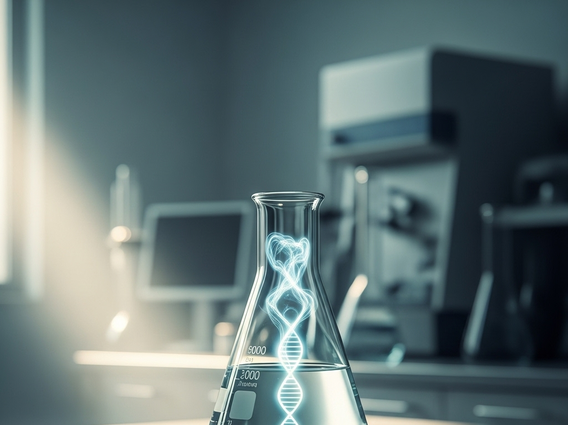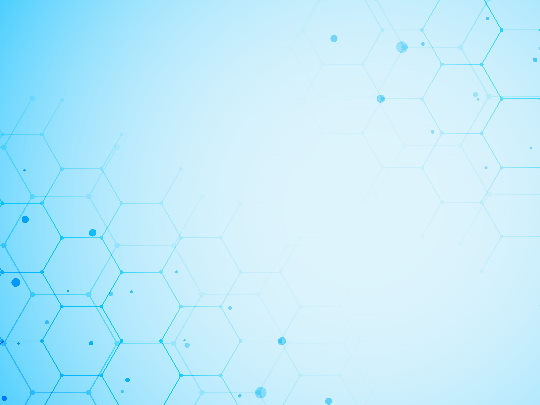Cancer-Causing Substances (Carcinogens)
Understanding cancer-causing substances, commonly known as carcinogens, is crucial for promoting public health and making informed lifestyle choices. These agents, found in our food, environment, and everyday products, have the potential to initiate or promote the development of cancer.

Key Takeaways on Carcinogens
- Carcinogens are agents that can cause cancer by damaging DNA and disrupting normal cell processes.
- They can be natural (e.g., aflatoxins) or man-made (e.g., industrial chemicals, tobacco smoke).
- Exposure occurs through inhalation, ingestion, or skin contact from various sources like air pollution, certain foods, and household products.
- Understanding common sources and mechanisms is vital for preventing exposure to carcinogens.
- Reducing risk involves lifestyle changes, careful product selection, and supporting public health initiatives.
What Are Carcinogens: Cancer-Causing Substances Explained?
The term “carcinogen” often evokes concern, and rightly so. These are substances or agents that have the capacity to cause cancer in living tissues. Their impact ranges from initiating the first cellular changes to promoting the growth of cancerous cells over time.
Defining Carcinogens: What Are Cancer-Causing Substances?
To understand what are carcinogens, it’s essential to recognize them as any substance, radionuclide, or radiation that promotes carcinogenesis, the formation of cancer. This can happen through various mechanisms, including damaging DNA, disrupting cellular metabolism, or interfering with cell repair processes. The International Agency for Research on Cancer (IARC), part of the World Health Organization, classifies agents into different groups based on the strength of evidence that they cause cancer in humans.
Natural vs. Man-Made Carcinogens in Food and Environment
Carcinogens are not exclusively man-made; they exist naturally in our world. For instance, certain molds produce aflatoxins, potent natural carcinogens in food, while UV radiation from the sun is a natural physical carcinogen. On the other hand, many synthetic chemicals, industrial byproducts, and components of tobacco smoke are well-known man-made carcinogens. Both types contribute to the overall burden of cancer risk from carcinogens in food and environment.
How Carcinogens Cause Cancer: Initial Mechanisms
The initial interaction between a carcinogen and the body often involves direct or indirect damage to cellular components. Some carcinogens directly react with DNA, forming adducts that can lead to errors during replication. Others may generate reactive oxygen species, causing oxidative stress that damages DNA and other cellular structures. These initial mechanisms set the stage for the more complex processes that ultimately lead to uncontrolled cell growth.
How Carcinogens Work: Cancer-Causing Substances & Your Cells
The journey from exposure to a carcinogen to the development of cancer is a complex multi-step process. It fundamentally involves the disruption of normal cellular functions, particularly those related to growth, division, and repair.
Cellular Impact: How Carcinogens Cause Cancer
At the heart of how do carcinogens cause cancer is their ability to interfere with the delicate balance of cell regulation. They can activate oncogenes (genes that promote cell growth) or inactivate tumor suppressor genes (genes that control cell growth and division). This imbalance can lead to cells growing and dividing uncontrollably, forming tumors. The body has natural defense mechanisms, but prolonged or intense exposure can overwhelm these systems.
DNA Damage from Cancer-Causing Substances
One of the primary ways cancer-causing substances exert their effect is by damaging DNA. This damage can take many forms, including breaks in the DNA strands, chemical modifications to the DNA bases (forming adducts), or cross-links between DNA strands. While cells have sophisticated repair mechanisms, if the damage is too extensive or incorrectly repaired, it can become permanent. This persistent damage is a critical step in carcinogenesis.
Genetic Mutations Caused by Carcinogens
When DNA damage is not repaired correctly before a cell divides, it can lead to genetic mutations. These mutations are permanent changes in the DNA sequence. If these mutations occur in critical genes that control cell growth, differentiation, or programmed cell death (apoptosis), they can transform a normal cell into a cancerous one. Over time, an accumulation of such mutations can drive the progression of cancer, highlighting the long-term impact of exposure to various carcinogens.
Common Carcinogens: Cancer-Causing Substances in Our Lives
Carcinogens are more prevalent than many realize, found in various aspects of our daily existence. Identifying these agents is the first step toward mitigating their potential harm.
List of Common Cancer-Causing Substances
The following is a list of common cancer-causing substances that people may encounter. This list is not exhaustive but covers some of the most frequently cited examples:
- Tobacco Smoke: Contains over 70 known carcinogens, including polycyclic aromatic hydrocarbons (PAHs) and nitrosamines.
- Asbestos: Mineral fibers used in construction, linked to mesothelioma and lung cancer.
- Radon: A radioactive gas that emanates from soil and rocks, accumulating in homes.
- Ultraviolet (UV) Radiation: From sunlight and tanning beds, a major cause of skin cancer.
- Processed Meats: Contain nitrates and nitrites, which can form carcinogenic N-nitroso compounds.
- Alcohol: Metabolized into acetaldehyde, a known carcinogen.
- Arsenic: Found in contaminated water and some foods.
- Formaldehyde: Used in building materials, household products, and some cosmetics.
- Benzene: A solvent found in gasoline and industrial emissions.
- Aflatoxins: Toxins produced by certain molds, often found on crops like peanuts and corn.
Identifying Carcinogens in Food and Environment
Being aware of potential sources is key to identifying carcinogens in food and environment. This involves reading labels on food products and household chemicals, understanding local environmental reports, and being informed about occupational hazards. Public health agencies often provide guidelines and warnings about known carcinogens, helping individuals make safer choices.
Everyday Products with Carcinogens: Key Examples
Many everyday products with carcinogens are found in our homes and workplaces. For instance, some cleaning supplies contain formaldehyde, and certain older building materials might still contain asbestos. Even personal care products can sometimes harbor substances like formaldehyde releasers or certain coal tar dyes. Awareness and careful product selection are important strategies for minimizing exposure.
Environmental Carcinogens: Cancer-Causing Substances & Health
Our environment is a significant source of exposure to cancer-causing substances. From the air we breathe to the water we drink, various environmental factors can contribute to cancer risk.
Air Pollution: Environmental Carcinogens & Health Risks
Air pollution is a complex mixture of particulate matter and gases, many of which are classified as environmental carcinogens and health risks. Fine particulate matter (PM2.5) from vehicle exhaust, industrial emissions, and burning biomass can penetrate deep into the lungs, causing inflammation and DNA damage. Radon gas, an odorless and colorless radioactive gas, is another significant indoor air pollutant and a leading cause of lung cancer after smoking. Long-term exposure to these airborne carcinogens significantly increases the risk of respiratory and other cancers.
Water Contaminants: Cancer-Causing Substances
Access to clean drinking water is fundamental for health, yet water can be a conduit for cancer-causing substances. Contaminants like arsenic, often found naturally in groundwater, are potent carcinogens linked to skin, bladder, and lung cancers. Disinfection byproducts (DBPs), formed when disinfectants like chlorine react with organic matter in water, are also a concern. Regular testing and treatment of public water supplies are crucial for minimizing these risks.
Occupational Exposure to Carcinogens in the Environment
Certain professions carry a higher risk of occupational exposure to carcinogens in the environment. Workers in industries such as manufacturing, construction, agriculture, and healthcare may encounter substances like asbestos, benzene, formaldehyde, and various pesticides. Protective measures, strict safety protocols, and regular health monitoring are essential to safeguard these individuals from the long-term health consequences of such exposures.
Carcinogens in Food: Cancer-Causing Substances to Watch For
Our diet plays a significant role in our overall health, and unfortunately, certain foods and food preparation methods can introduce cancer-causing substances into our bodies.
Foods That Contain Carcinogens: What to Know
Understanding foods that contain carcinogens is vital for making healthier dietary choices. While a balanced diet is generally protective, certain components or contaminants can pose risks. For example, foods contaminated with specific molds, or those subjected to high-temperature cooking, can contain carcinogenic compounds. Awareness of these sources allows for informed decisions about food selection and preparation.
Processed Foods and Cancer-Causing Substances
Processed foods, particularly processed meats like bacon, sausages, and deli meats, are a significant source of cancer-causing substances. These products often contain nitrates and nitrites used as preservatives, which can convert into N-nitroso compounds (NOCs) in the body, known carcinogens. High-temperature cooking methods, such as grilling or frying, can also lead to the formation of heterocyclic amines (HCAs) and polycyclic aromatic hydrocarbons (PAHs) in meats, further contributing to the risk.
Here’s a brief overview of common food-related carcinogens:
| Carcinogen Type | Common Food Sources | Mechanism/Notes |
|---|---|---|
| Nitrosamines (NOCs) | Processed meats (bacon, sausage, hot dogs) | Formed from nitrates/nitrites during processing or digestion. |
| Heterocyclic Amines (HCAs) | Well-done, grilled, or fried meats | Formed from amino acids and creatine at high temperatures. |
| Polycyclic Aromatic Hydrocarbons (PAHs) | Smoked foods, grilled meats, charred foods | Formed when fat drips onto hot surfaces and smoke rises. |
| Aflatoxins | Moldy peanuts, corn, tree nuts, grains | Produced by certain fungi (Aspergillus species). |
| Acrylamide | Fried potato products (fries, chips), baked goods, coffee | Formed from sugars and amino acids during high-temperature cooking. |
Naturally Occurring Carcinogens in Food
Not all food-related carcinogens are a result of processing or cooking. Some occur naturally. Aflatoxins, mentioned earlier, are potent naturally occurring carcinogens in food produced by molds that can contaminate crops. Another example is safrole, found in sassafras and some spices, which has been shown to be carcinogenic in animal studies. While these are often present in small amounts, understanding their existence helps in making informed dietary choices and supporting regulations that monitor food safety.
Everyday Products with Cancer-Causing Substances (Carcinogens)
Beyond food and environmental pollution, many items we use daily can contain cancer-causing substances. Being aware of these can help us make safer choices for our homes and personal care.
Household Products: Everyday Carcinogens at Home
Our homes, often perceived as safe havens, can contain everyday products with carcinogens. Cleaning supplies, for instance, may contain formaldehyde or other volatile organic compounds (VOCs) that are irritating and potentially carcinogenic with long-term exposure. Pesticides used in gardens or for pest control indoors also often contain chemicals classified as probable human carcinogens. Choosing “green” or non-toxic alternatives and ensuring good ventilation can help reduce exposure.
Cosmetics and Personal Care: Cancer-Causing Substances
The cosmetics and personal care industry is another area where cancer-causing substances can be found. Some hair dyes, particularly older formulations, have been linked to an increased risk of certain cancers. Formaldehyde-releasing preservatives (like quaternium-15, DMDM hydantoin) are sometimes used in shampoos, lotions, and other products. Talc, especially when contaminated with asbestos, has been a concern in some cosmetic powders. Consumers are encouraged to research ingredients and opt for products with fewer questionable chemicals.
Building Materials & Carcinogens in the Environment
The materials used to construct and furnish our homes can also be sources of carcinogens in the environment. Asbestos, once widely used for insulation and fireproofing, is a well-known carcinogen. Formaldehyde is present in pressed wood products like particleboard and plywood, and can off-gas into indoor air. Even lead paint, though primarily known for neurotoxicity, can contain carcinogenic lead compounds. Awareness of these materials, especially in older homes, is important for renovation and maintenance decisions.
Preventing Exposure to Cancer-Causing Substances (Carcinogens)
While complete avoidance of all carcinogens is impossible, there are many practical steps individuals and communities can take to significantly reduce exposure and lower cancer risk.
Reducing Risk: Preventing Exposure to Carcinogens
Preventing exposure to carcinogens involves a multi-faceted approach. This includes minimizing contact with known carcinogens, adopting healthier lifestyle habits, and supporting regulatory efforts to control environmental pollutants. Simple actions like quitting smoking, limiting alcohol intake, and using sunscreen are powerful steps. At home, ensuring good ventilation and choosing safer products can also make a difference.
- Avoid tobacco products and secondhand smoke entirely.
- Limit alcohol consumption.
- Protect skin from excessive UV radiation by using sunscreen and protective clothing.
- Test homes for radon gas and mitigate if levels are high.
- Ensure proper ventilation when using household chemicals or working with materials that might release fumes.
- Follow safety guidelines for occupational exposure, including wearing personal protective equipment.
Lifestyle Choices to Avoid Carcinogens in Food
Dietary choices are a powerful tool in preventing exposure to carcinogens in food. Emphasizing a diet rich in fruits, vegetables, and whole grains can provide protective antioxidants and fiber. Limiting consumption of processed and red meats, and opting for leaner cooking methods like baking or steaming over grilling or frying, can reduce the formation of HCAs and PAHs. Proper food storage to prevent mold growth also helps avoid aflatoxins.
Public Health: Limiting Environmental Carcinogens
Beyond individual actions, public health initiatives play a critical role in limiting environmental carcinogens. Government regulations on industrial emissions, vehicle standards, and water quality are essential for reducing widespread exposure. Promoting renewable energy, supporting urban planning that encourages active transport, and funding research into safer alternatives for hazardous chemicals are all ways public health efforts contribute to a healthier, less carcinogenic environment for everyone.
Frequently Asked Questions About Carcinogens
What exactly are carcinogens?
Carcinogens are substances, agents, or types of radiation that have the ability to cause cancer. They do this by damaging a cell’s DNA, altering its genetic material, or interfering with normal cellular processes that regulate growth and division. This damage can lead to uncontrolled cell proliferation, which is the hallmark of cancer.
These agents can be found in various forms, including chemicals (e.g., benzene, asbestos), physical agents (e.g., ultraviolet radiation, X-rays), and biological agents (e.g., certain viruses like HPV, bacteria like H. pylori). Understanding their nature is the first step in mitigating their risks.
How do carcinogens lead to cancer development?
Carcinogens primarily cause cancer by inducing mutations in a cell’s DNA. When a carcinogen damages DNA, and this damage is not repaired correctly, it can lead to permanent changes in the genetic code. If these mutations occur in critical genes that control cell growth (oncogenes) or suppress tumor formation (tumor suppressor genes), the cell can lose its normal regulatory mechanisms.
This loss of control allows the cell to grow and divide uncontrollably, forming a tumor. The process is often multi-step, requiring an accumulation of genetic changes over time, which explains why cancer often develops years after initial exposure to a carcinogen.
Can you provide a list of common cancer-causing substances?
Certainly. A comprehensive list of common cancer-causing substances includes tobacco smoke (containing numerous carcinogens), asbestos, radon gas, ultraviolet (UV) radiation from the sun, and certain industrial chemicals like benzene and formaldehyde. In our diet, processed meats, alcohol, and aflatoxins (from molds) are also recognized carcinogens.
Environmental factors such as air pollution and arsenic in contaminated water also contribute to this list. Organizations like the International Agency for Research on Cancer (IARC) regularly update and classify these agents based on scientific evidence.
What are the best ways to prevent exposure to carcinogens?
Preventing exposure to carcinogens involves a combination of lifestyle choices and environmental awareness. Key strategies include avoiding tobacco and excessive alcohol, protecting yourself from UV radiation, and ensuring your home is tested for radon. In your diet, prioritize whole, unprocessed foods, limit red and processed meats, and cook foods at lower temperatures.
Additionally, be mindful of everyday products with carcinogens by choosing safer household cleaners and personal care items, and ensure good ventilation when using chemicals. Supporting public health initiatives that regulate environmental pollutants also plays a crucial role in reducing overall exposure.
Are there carcinogens in everyday products I use?
Yes, unfortunately, some everyday products may contain carcinogens. For instance, certain household cleaning products can contain formaldehyde or other volatile organic compounds (VOCs). Some older building materials might still harbor asbestos, and formaldehyde is commonly found in pressed wood products. In personal care, some hair dyes or preservatives in cosmetics can also be a concern.
It’s advisable to read product labels, choose products with fewer chemicals, ensure good ventilation in your home, and be aware of the materials in your living environment, especially in older structures. Opting for “green” or certified low-VOC products can help reduce your exposure.





